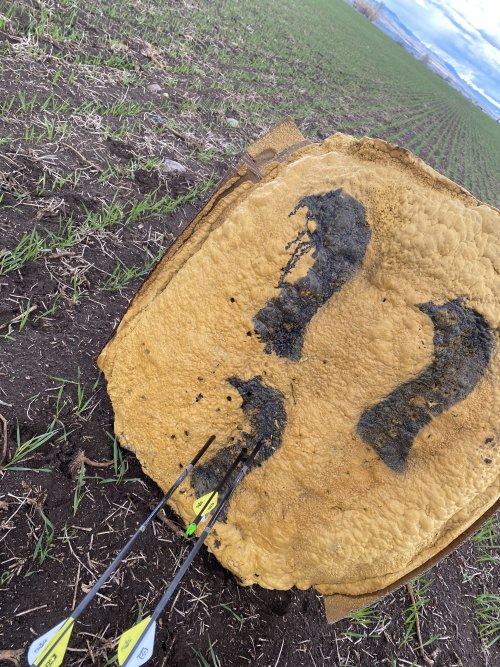sclancy27
Well-known member
- Joined
- Nov 23, 2022
- Messages
- 883
You could adjust the amount of fletching area at the end of the shaft. Less SA catches less wind. You then run into the problem of being able to control the broadhead with the fletchings....From what I can tell, one of the more difficult things about high FOC arrows is good flight in the wind. I’m not sure whether or not it’s possible to get an arrow with really high FOC to fly straight in high winds, especially at low arrow velocity.
YesIm sure a missile guy could answer that question with very little thought required. Even if it’s possible to get a really high FOC arrow to fly properly in high wind, I’m almost 100% certain that it’s easier to get a more balanced arrow to fly properly in the wind.
That is the single most important aspect of penetration, having a well flying arrow that is able to take advantage of all the KE in the arrow.Remember, there is a difference between wind drift and an arrow shaft that is aligned with the direction of flight. I feel like higher FOC should result in reduced wind drift, but worse shaft alignment to flight path. I may be totally wrong. I don’t remember anything from fluids.That said, I’ve heard a podcast or two involving complaints about high FOC and high wind. An arrow shaft that is misaligned with the arrow’s flight path is going to rob a lot of penetration.





